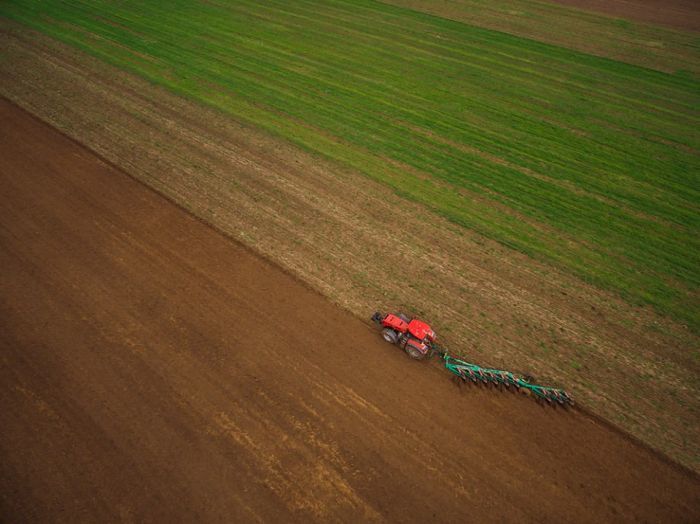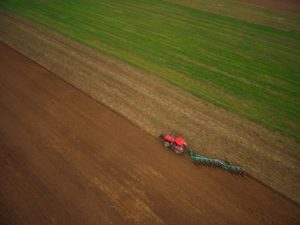How AI is helping farmers to save thousands of dollars
AI • Dec 27,2016

How AI is helping farmers to save thousands of dollars

Food and agribusiness comprise a $5 trillion industry that accounts for 10 percent of global consumer spending, 40 percent of employment and 30 percent of greenhouse-gas emissions. This massive industry does not change easily, but change – transformative innovation – is precisely what’s needed. We collected some examples of artificial intelligence techniques that can help farmers to save thousands of dollars.
Three years ago Belarusian startup OneSoil was created. It’s an online service to monitor the status of sown areas, which can increase productivity and save resources with the help of artificial intelligence. To collect unique data OneSoil founders use their own fleet – a drone, flying wing and gasoline helicopter. During the hot 2016 agriculture season startup analysed 55 000 hectares of land and according to estimates, saved households more than $250 000.
A Queensland university in Australia says it has developed a fully-autonomous weed-killing robot that could cut the cost of weed control by 90%, potentially saving the farm sector $1.3 billion a year. The Queensland University of Technology’s AG BOT II is about the size of a golf buggy, equipped with a rig for spraying chemicals and distributing fertiliser.
Some weed species are developing resistance to broad scale chemicals such as glyphosate and paraquat through a process of selection, where susceptible plants are killed but those with a naturally-occurring resistance gene are not. Over generations of the weed, the gene becomes dominant, forcing farmers to find alternative and often costly ways to kill the weeds. AG BOT II could not only offer an option for growers that could no longer use chemicals, but could also prevent new resistance emerging in weed populations.
QUT estimates the robot could cost farmers about $20 000, and anticipates several would work together on each farm to speed up the eradication, eventually replacing tractors and other expensive farm equipment. The robot could also reduce herbicide run-off by reducing application rates through precision targeting.
Farmers collect and act on copious amounts of data. GPS data from satellites lies at the heart of Precision Agriculture. Farmers use farm management software and GPS receivers to map their fields, and to track the yield (amount of crop) that they get from every square meter. Based on their collected and mapped (georeferenced) data, farmers can generate prescription maps which specify how much fertilizer to apply in each region of the field, how densely to plant seed in that region, and so on, in order to optimize yield and minimize unnecessary chemical applications.
Given this sort of planter, the prescription map is loaded into the computer on the tractor, and the tractor driver simply..drives. The driver steers the tractor, the tractor pulls the planter, and the onboard computer controls the seeding rate based on where the planter is in the field. The same strategy is applied in other crop maintenance activities such as fertilizing and other chemical applications. The computer monitors the vehicle location and ensures chemicals are applied only where prescribed, in customized doses tailored to the specific area. This has cost benefits to the farmer — less chemicals used is dollars saved — and it also has environmental benefits, since less chemicals used is less chemicals at risk of leeching into the surrounding ecosystem.
Sensor networks and autonomous mobile robots have the potential to make greenhouses largely self-sufficient. Robots that manage planting, watering, weeding, and harvesting are currently under development. Greenhouses are well positioned to integrate such systems given the confined space and ability to install tracks to plan robot’s routes.
By incorporating artificial intelligence into greenhouses, tomato farmers can maintain centralized visibility to production while greatly reducing the need for daily manual labor to maintain these new facilities. Growing tomatoes via greenhouse and taking control of the climate in this indoor environment, could help grow tomatoes year-round. The quality of the product will also improve and will save hundreds of thousands of dollars in markdowns.
The future of food depends on ability to preserve and improve the use of planet’s key resources and reduce over-farmed soil by shifting from traditional farming practices to alternative ones. Farmers would be able to use artificial intelligence streaming capabilities to provide healthy yields regardless of climate change, drought and disaster. More important that ai and machine learning techniques can save hundreds of dollars, which can be reinvested in R&D and innovation in agriculture.
Author: AI.Business
If you like our articles, please subscribe to our monthly newsletter:
[mc4wp_form id=”763″]
Previos Article How AI is changing Asian agriculture industry
Next Article Artificial intelligence in missile technology